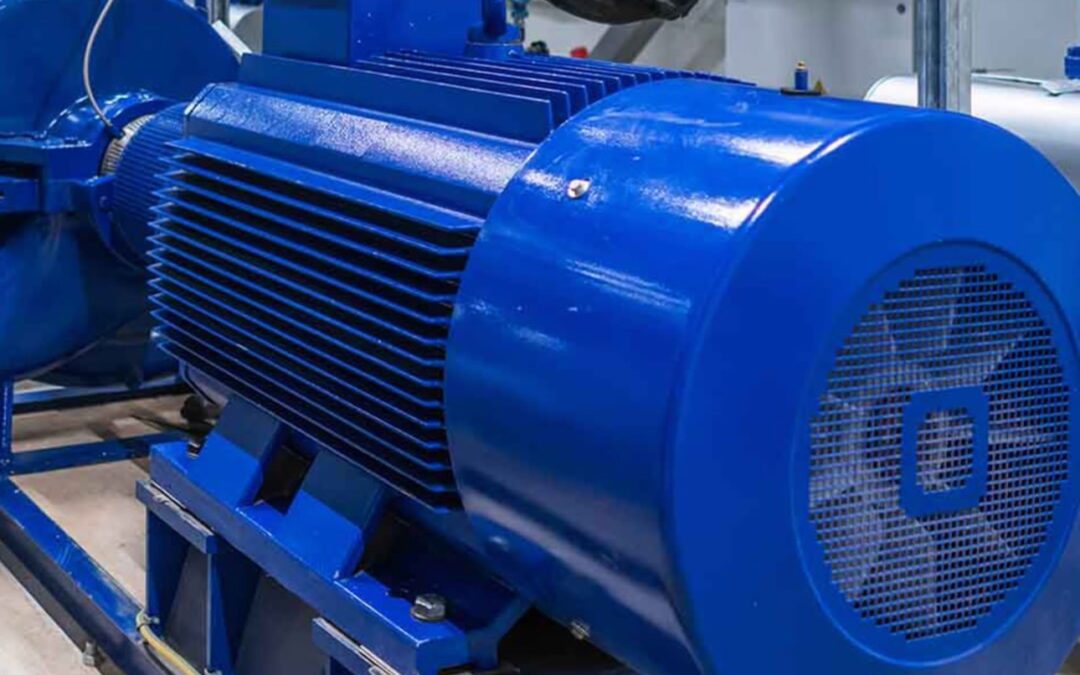Dynamic Balancing
While vibration in motors is inevitable, it can be a warning sign that not everything is in alignment. Vibration while an electric motor is operating comes from forces acting on the bearings as the out of balance motor shaft rotates. The worse the imbalance or the faster the motor operates, the more noticeable the vibration.
Completely eliminating vibration is impossible, but reducing the intensity of the vibration increases efficiency and reduces wear on the bearings and motor. Dynamic balancing brings a motor’s mass into balance on multiple planes and decreases existing vibrations to reduce noise and extend the motor’s operational life.
Static Balancing and Why It’s Not Enough
Static balancing involves getting a motor balanced in a single plane. Material can be removed from the rotor to align the center of gravity with the rotor’s axis. Without a braking force, the shaft will remain stationary when it is statically balanced. While static balancing is important, for a motor to operate properly for a long time it must be balanced not just at rest but also when it is operating at its designed speed.
Dynamic, or secondary balancing, involves balancing force couples on two or more planes. While a statically balanced rotor can be seen at rest, dynamic imbalance only becomes apparent when the object is rotating. Long, efficient motor operation requires that a motor be balanced in both static and dynamic conditions.
Centrifugal Force and the Impact on Bearings
Dynamic balancing is incredibly important because of the impact rotational speed has on the force bearings must endure. The amount of force can be calculated given an unbalanced weight, radius, and rotational speed:

Doubling the rotational speed results in an incredible four times the force to the bearing. Small imbalances can have a large impact on bearings, especially for large-diameter motor shafts or high operating speeds. Even just a 1-ounce imbalance on a 1.5” radius shaft operating at 3,600 RPM adds a 34.5 lb force to the bearings.
Performing Dynamic Balancing
Sensors on a motor’s bearing pedestals give a great deal of insight into how well the motor is balanced when it is operating. If a motor’s shaft is out of balance in two planes, vibrations will show up in the sensor data corresponding to this imbalance. The larger the motor, the more likely there is to be an imbalance between two planes. Weight must be added or removed to bring the motor back into balance between multiple planes.
Balancing Standards and Guidelines
Two standards are commonly used when balancing electric motors.
1. NEMA MG1
This standard is not used as often today but is still used by some motor balancing machines and some electric motor shops. The standard defines limits in displacement, velocity, and acceleration that a motor can exhibit. While the force on the bearing can be projected, the NEMA standard defines limits on travel in mils.
2. ISO 1940-1
This standard provides balance guidelines using the “G” scale. This standard actually measures the force applied to a motor bearing during operation. The rotor weight is needed when balancing to the ISO standard. The use of this scale allows for an easier way to specify how well-balanced the machine should be.
Dynamic Balancing Report
After undergoing dynamic balancing, the test shop should provide the customer with a dynamic balancing report. This report will explain what standard was used for balancing and the outcome of that procedure. The dynamic balance report serves as a record that a particular motor was properly balanced.
The Benefits of Dynamic Balancing
Dynamic balancing is good practice and is incredibly important for the life of the motor. Some common benefits seen from dynamic balancing include:
– Low Noise
Mechanical vibration at certain frequencies is often caused by an imbalance. These noises can be quite irritating and distracting, creating a hazardous or unproductive environment for workers. Correcting that imbalance removes the source of the noise.
– Low Vibration
Imbalance is typically one of the main causes of a motor’s vibration. Removing the imbalance reduces the oscillating force applied to a motor’s bearing with each turn of the motor shaft. Reduction of forces on the bearing reduces vibration.
– Operator Comfort and Safety
For operators who are around a certain motor for long periods of time, correcting for dynamic imbalances reduces the noise exposure for the operator and makes a mechanical failure of the motor less likely.
– Bearing Life
Dynamic imbalances can cause bearings to take a beating. Fixing these imbalances extends the life of the motor’s bearings and reduces the likelihood of issues with bearing lubrication.
– Reduced Downtime
Unexpected downtime can cause major interruptions to any type of work. Extending motor operational life and reducing unexpected downtime is always a good thing.
Dynamic Balancing: Always Important
A properly balanced and maintained electric motor can operate efficiently for many years. Knowing that the motor underwent a proper dynamic balancing ensures that issues like premature bearing failure, excessive noise, or shortened motor life are less likely to occur. EASA-accredited facilities have the expertise to properly balance electric motors. For any questions about dynamic balancing, reach out to the motor experts at B+M Industrial today.

